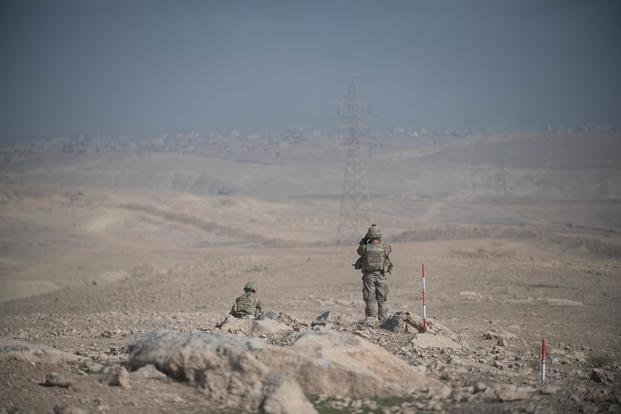U.S. and coalition forces launched cyberattacks last year to help identify and destroy several command posts of Islamic State leaders, according to the former head of the task force to defeat ISIS in Iraq and Syria.
"This is a vignette that actually played out during and after the battle of Mosul and after the battle of Raqqa," said Gen. Stephen Townsend, who commanded Combined Joint Task Force-Operation Inherent Resolve in 2017.
Townsend, who now commands Army Training and Doctrine Command, described the multi-domain operation to an audience at the Association of the United States Army's LANPAC Symposium and Exposition in Hawaii.
U.S. and coalition forces were scouring the middle Euphrates River Valley, between Al Qa'im in Iraq and Raqqa in Syria, in search of command posts used by ISIS leaders, Townsend said.
Friendly forces had located the enemy's primary command post in the area but couldn't find the enemy's alternate sites.
"We knew that the enemy had alternate command posts, but we didn't know where they were," Townsend said.
"So rather than strike the primary command post and then have the enemy be unknown to us for a while while we reacquired where he went to, one of the subordinate units proposed that we use ... capabilities from space and cyber to deny the enemy's primary command post, forcing him to move to and unveil his alternate command posts," he explained.
The plan worked, Townsend said. When the enemy moved, "we struck the alternate command posts kinetically with lethal fires once we identified them, and we worked our way backward to the primary command post."
The coordinated strikes were a clear example of multi-domain operations, formally known as multi-domain battle, a strategy U.S. military leaders stress as the key to surviving future wars with near-peer adversaries such as Russia and China.
"It's a multi-domain operation; it unfolded in air, land, sea, cyberspace and space," Townsend said.
But it took too long to complete -- about three weeks, he said, describing how some of the assets used required authorization from the national level and coalition partner nations.
"The bottom line is it took us a couple of weeks to organize this pretty sophisticated but small, multi-domain operation that lasted less than a week, and it was against an enemy that could not really contest us in any of the domains," Townsend said.
"Let's look to future war against a near-peer threat that can contest us in one or all of the domains. We are going to have to do better," he said.
"When the adversary's combined arms armies come rolling toward our alliance, we are going to have to generate ... sophisticated multi-domain operations in minutes or hours and those operations will have to last days and weeks," Townsend said.
-- Matthew Cox can be reached at matthew.cox@military.com.










